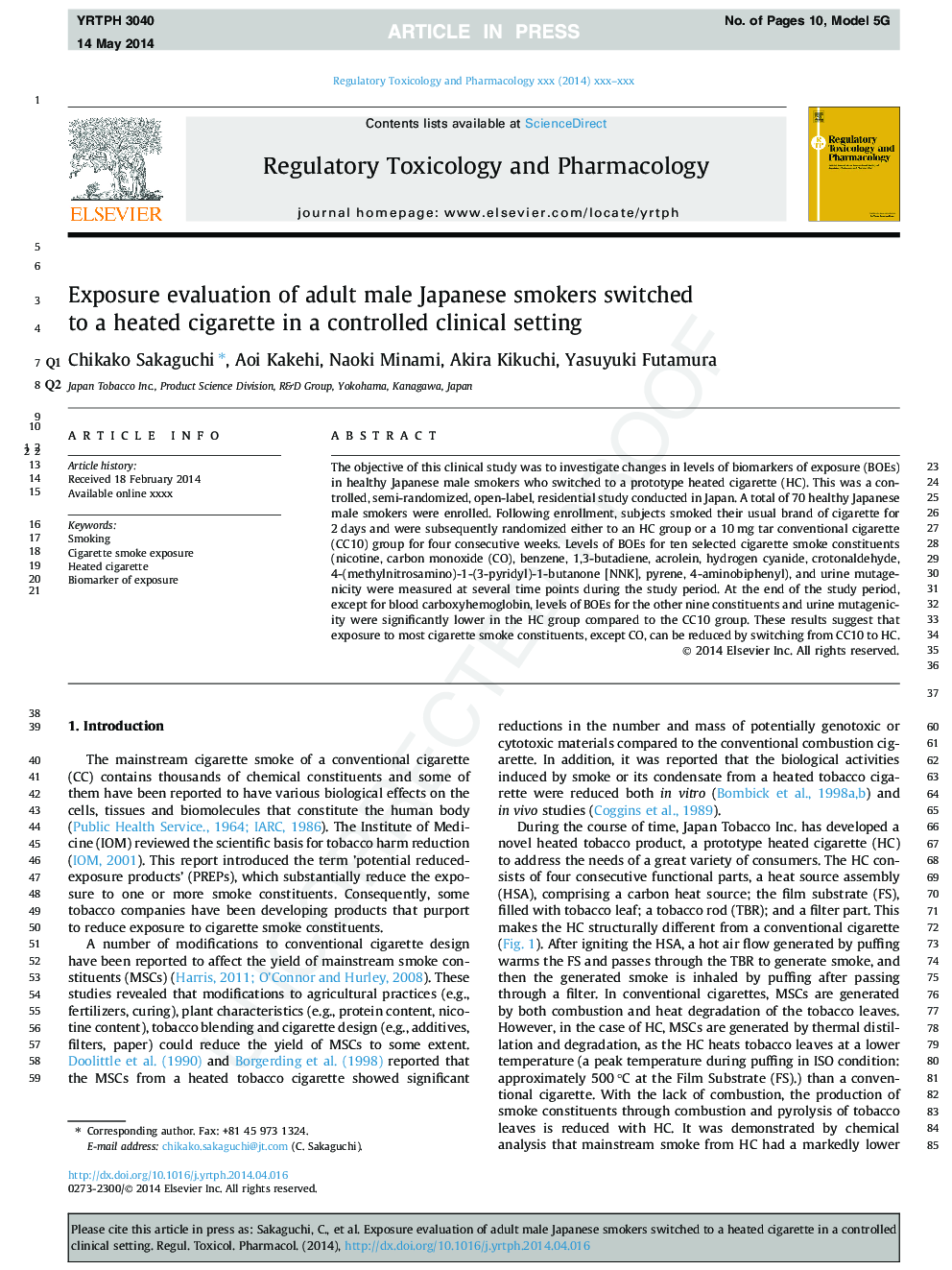| Article ID | Journal | Published Year | Pages | File Type |
|---|---|---|---|---|
| 5857035 | Regulatory Toxicology and Pharmacology | 2014 | 10 Pages |
Abstract
The objective of this clinical study was to investigate changes in levels of biomarkers of exposure (BOEs) in healthy Japanese male smokers who switched to a prototype heated cigarette (HC). This was a controlled, semi-randomized, open-label, residential study conducted in Japan. A total of 70 healthy Japanese male smokers were enrolled. Following enrollment, subjects smoked their usual brand of cigarette for 2Â days and were subsequently randomized either to an HC group or a 10Â mg tar conventional cigarette (CC10) group for four consecutive weeks. Levels of BOEs for ten selected cigarette smoke constituents (nicotine, carbon monoxide (CO), benzene, 1,3-butadiene, acrolein, hydrogen cyanide, crotonaldehyde, 4-(methylnitrosamino)-1-(3-pyridyl)-1-butanone [NNK], pyrene, 4-aminobiphenyl), and urine mutagenicity were measured at several time points during the study period. At the end of the study period, except for blood carboxyhemoglobin, levels of BOEs for the other nine constituents and urine mutagenicity were significantly lower in the HC group compared to the CC10 group. These results suggest that exposure to most cigarette smoke constituents, except CO, can be reduced by switching from CC10 to HC.
Related Topics
Life Sciences
Environmental Science
Health, Toxicology and Mutagenesis
Authors
Chikako Sakaguchi, Aoi Kakehi, Naoki Minami, Akira Kikuchi, Yasuyuki Futamura,
